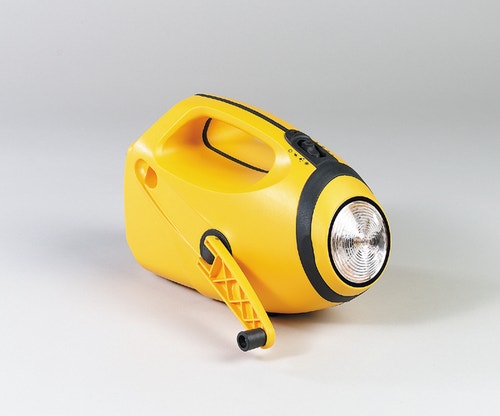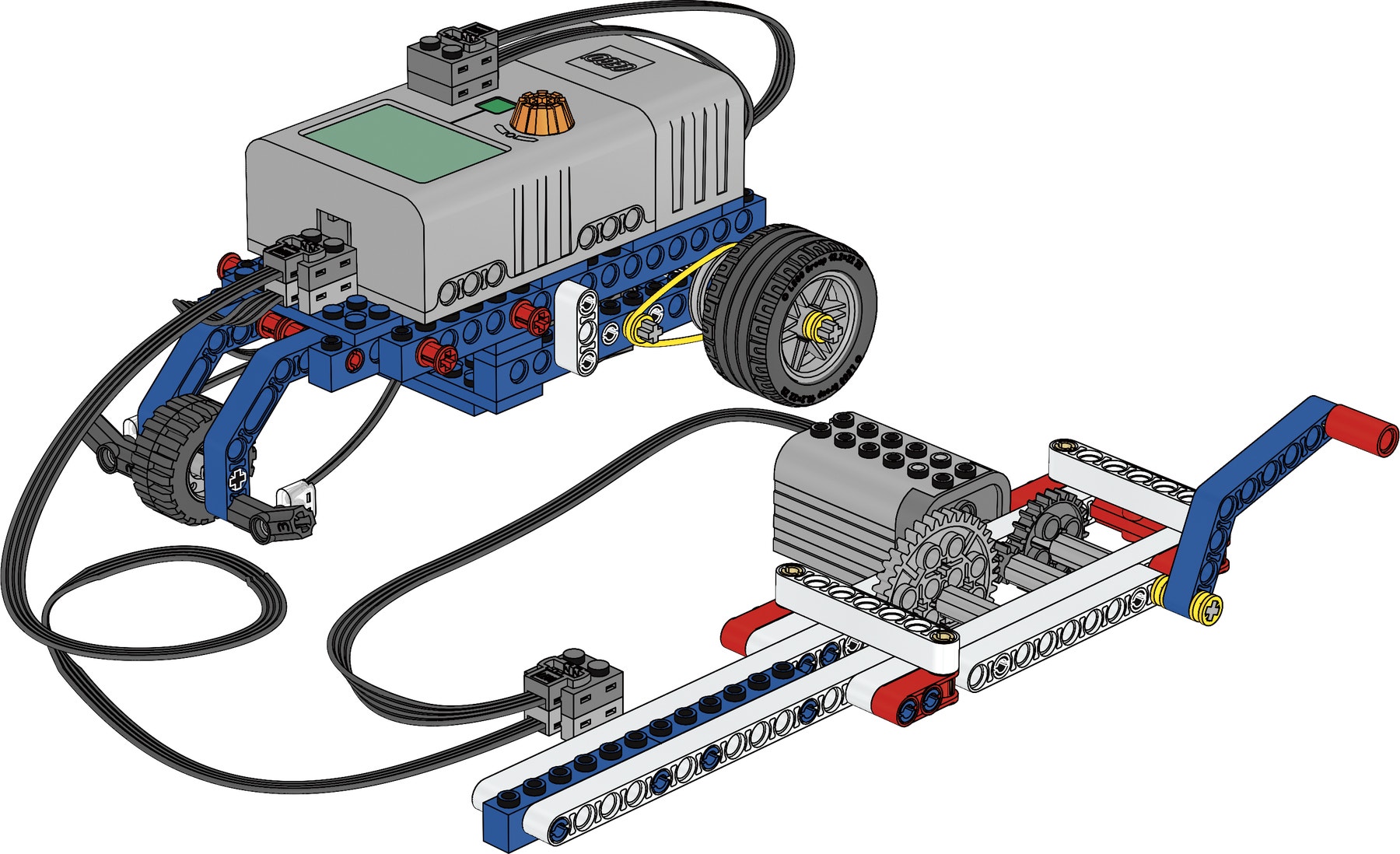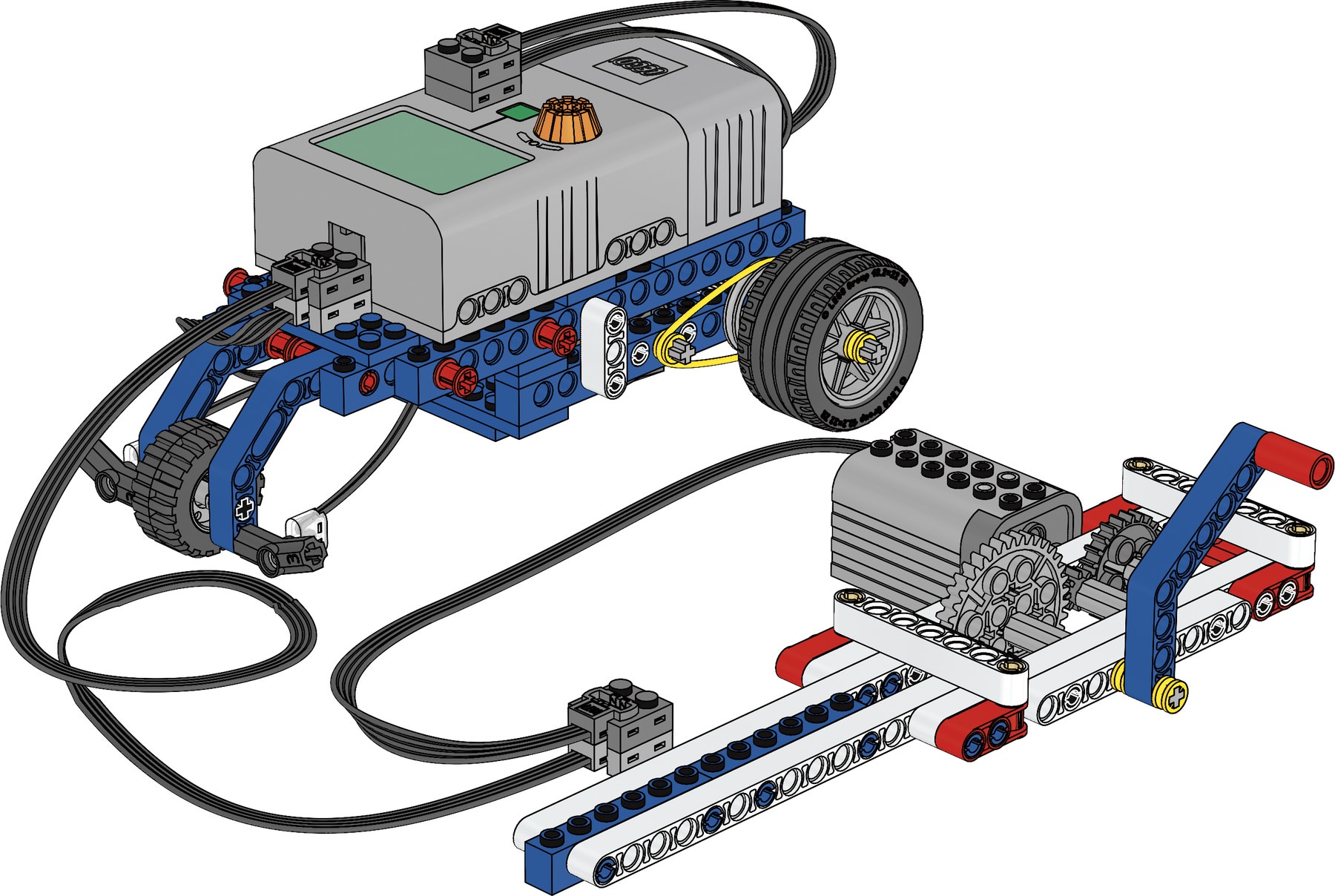Hand Generator
Explore the conversion of mechanical energy into electrical energy using a hand-operated generator

Connect
(5-10 Minutes)
Generators have the ability to convert mechanical energy into electrical energy. The human body can operate a generator by turning the handle. The faster we turn the handle the more electricity we generate.
Now build the Hand Generator and investigate its ability to generate power.

Construct
(20-25 Minutes)
Build the Hand Generator and the Joule Jeep
(Building Instruction booklet 1A and 1B, to page 15, step 16).
Test the model’s functionality. Loosening bushings can reduce friction. Connect the plugs properly by pressing them firmly together. Make sure to return the joules (J) reading to zero before testing.

Test Setting
Mark a start line for your Joule Jeep.


Contemplate
(20-25 minutes)
Turn and go
The task requires students to investigate how many joules (J) the Hand Generator can accumulate after a time period of 60 seconds and see how far these joules can power the Joule Jeep.

First, have students graph their prediction in a system of coordinates showing how many joules they will accumulate after a time period of 60 seconds.
Then, have students investigate how many joules they can accumulate by turning the handle of the Hand Generator during a period of 60 seconds. Have them read and record their findings at 10 second intervals and have them graph their findings in the same system of coordinates as their prediction.
Next, have students find out how far the Joule Jeep can run on the amount of accumulated joules.
Findings will vary; students will see that the distance traveled by the Joule Jeep will vary depending on the amount of accumulated joules.
Hint
Reset the Energy Meter before each investigation.
Have students reflect on their investigations by asking questions such as:
• Which factors did you base your predictions on?
• Can you explain your findings?
• Can you identify a pattern or trend in the findings?
For a given time, the amount of accumulated joules is proportional to the speed of turning the handle.
• How did you make sure that your findings were scientifically valid?
Students need to investigate several times to make sure findings are consistent and that the Joule Jeep starts and runs from the same spot and on the same track surface.
Did you know?
An idler gear changes the direction of rotation, but does not affect the output speed.
Continue
(25-30 Minutes)
Gearing up
(Building Instruction booklet 1A and 1B, to page 16 step 1).
The task requires students to investigate how many joules (J) the rebuilt Hand Generator can accumulate after a time period of 60 seconds and then see how far these joules can power the Joule Jeep.

First, have students rebuild the Hand Generator’s gearing. Then, based on their knowledge of specific characteristics of gears, have them graph their prediction in a system of coordinates showing how many joules they will be able to accumulate over a time period of 60 seconds.
Then, have students investigate how many joules they can accumulate by turning the handle of the Hand Generator during a period of 60 seconds. Have them read and record their findings at 10 second intervals and have them graph their findings in the same system of coordinates as their prediction.
Next, have students find out how far the Joule Jeep can run on the amount of accumulated joules.
Findings will vary, but a significant increase in the amount of joules accumulated will be seen. Ideally, students should predict a 60% increase in the amount of joules accumulated. How far the Joule Jeep will travel will vary depending on the amount of accumulated joules.
Hint
Reset the Energy Meter before each investigation.
Identifying Variables
Have students identify and write down at least three variables, explaining clearly how these affect the efficiency of the Hand Generator and the Joule Jeep.
Some factors could include the effects of changing the gearing, the length of the handle, the speed with which the handle is turned, the strength and stamina of the person turning the handle and the structural stability of the Hand Generator. The Joule Jeep’s efficiency is influenced by its weight, gearing, friction and the track surface.
Did you know?
The unit for the energy producing potential in food is calories (cal). One calorie is generally assumed to be 4.2 J.
Teacher Support
Students will explore the concepts of:
Scientific investigation
Conversion and storage of energy
Investigating and evaluating variables
Informal and formal measuring of distance/time/speed/work
Reading, predicting, and interpreting data
9686 Simple & Powered Machines Set (two students per set recommended)
9688 Renewable Energy Add-on Set
Graph paper
Ruler or measuring tape
Stopwatch or timer
NGSS
Disciplinary Core Ideas: Physical Science
MS-PS3 Energy
Crosscutting Concepts
Cause and effect: Mechanism and explanation
Scale, proportion, and quantity
Systems and system models
Energy and matter: Flows, cycles, and conservation
Structure and Function
Stability and change
Science and Engineering Practices
Developing and using models
Planning and carrying out investigations
Analyzing and interpreting data
Constructing explanations and designing solutions
Obtaining, evaluating, and communicating information
Common Core State Standards English Language Arts
SL 6-8.1 / SL 6-8.4 / RST 6-8.3 / RST 6-8.4 / RST 6-8.7 / WHST 6-8.1 / WHST 6-8.2 / WHST 6-8.4
Student Material
Share with:
 Google Classroom
Google Classroom



